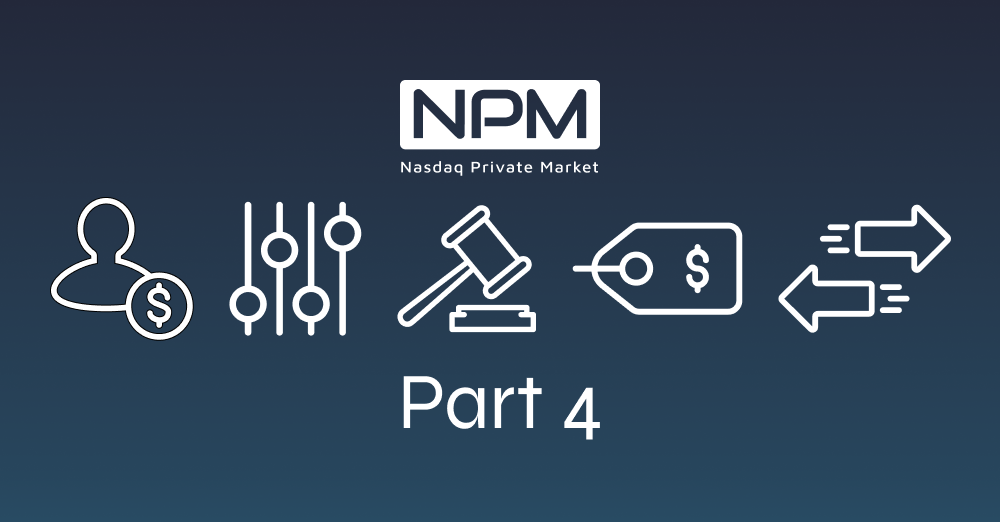Part 4 in the Nasdaq Private Market series on private company secondary auctions.
In 2018, Nasdaq Private Market (NPM) began the creation of a new transaction model while working with a private business to business company valued at over $1 billion. The resulting model was what we now call the “buy-side auction”, and led to a successful transaction in which winning bidders were able to purchase shares in the company and provide liquidity to employees eligible to sell in this transaction†. The secondary transaction closed just a few months after their most recent round of funding and resulted in a final clearing price above the last round’s price per share of preferred stock. NPM, along with our client, identified both existing and new investors that included sophisticated venture capital investors, institutional funds, and Fortune 500 companies with collective assets under management of more than $100 billion. The company’s growth, executive team, and investors contributed to the company’s ability to attract new investors and saw an increased appetite for additional investment from existing investors.
After the buyers had been assembled and permissioned by the company to participate, disclosure materials were shared via NPM’s confidential data–room. Buyers were given two weeks to review the materials and had the option to use the week-long bidding process as additional time for research and meetings with the company. Calls and meetings with all interested buyers were conducted in order to provide buyers with information they deemed to be sufficient to make an investment decision. The company had originally forecasted the maximum sellable amount (e.g., 10,000,000 shares) and elected to only set a price floor that bidders would have to bid at or above. Armed with this information, buyers participated in the seven-day bidding process to enter bids for a number of shares at a particular price per share (e.g., $20/share for 1,000,000 shares).
During the bidding period, NPM received several bids from a majority of the buyers, exceeding demand projections by 95% (e.g., 10,000,000 projected, but 19,500,000 shares bid for). The clearing price was calculated using the lowest bid that cleared the maximum projected sellable amount. This resulted in a clearing price that was calculated at a premium to the last round of preferred. In this particular transaction, several of the buyers submitted winning bids and were allocated share amounts according to their bid sizes. Buyers with winning bids were then permissioned into the tender offer process where the company’s eligible shareholders were given the opportunity to sell their shares at the clearing price. The entire process lasted approximately eight weeks. This transaction ended successfully by providing eligible sellers with access to liquidity at a competitive offer price and giving investors the chance to invest in what they believed was an attractive investment opportunity.



